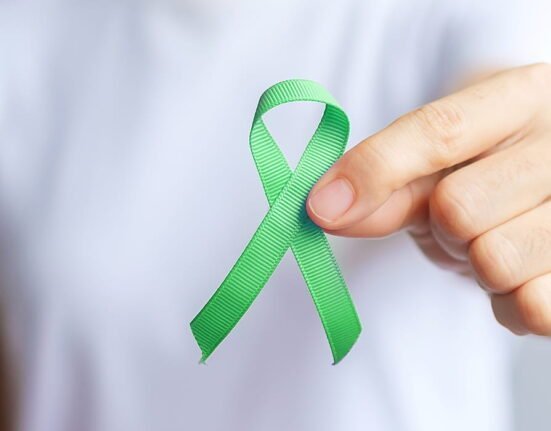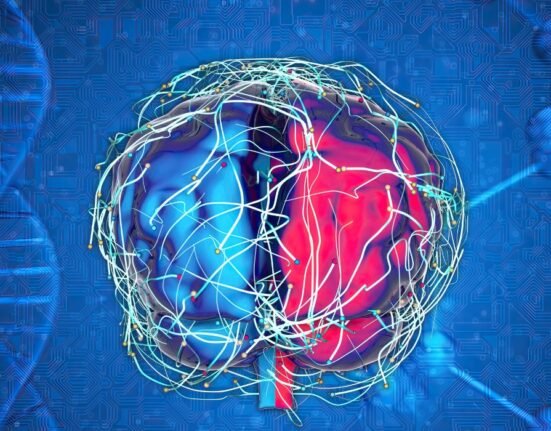Chronic pain is composed of many things, and while you might be inclined to think that it’s just an all-encompassing, infinite span of hurt, there is much more involved. There are a variety of psychosocial factors that tend to emerge when delving into the history of a person with chronic pain.
Since treatments have begun taking a turn back to the authentic, holistic approach they had ages ago, it’s worth noting that treating the whole body and whole person is the best way to manage chronic pain that has developed. There may be one singular cause of the chronic pain, such as an injury, but the way pain is perceived and how one copes with it hinges on a variety of things.
A study from 2016 focused on this specific topic, providing enlightening revelations on the role of psychosocial processes in terms of impacts on the development and maintenance of chronic pain. The study found that these factors play a critical role, noting that negative psychosocial factors tend to raise the risk for poor outcomes in pain management, while adding positive variables was best for resiliency. In short, it addressed that an array of psychosocial factors influences the long-term results of chronic pain.
Understanding Psychosocial Factors
Psychosocial factors tend to first arise in early childhood, and while they can be changed through the course of life, it can be difficult to challenge what has already been ingrained into a person. When someone has positive psychosocial factors in childhood, it bodes well for much of their lives. These people tend to be well-adjusted, having spent their years in a supportive family environment where their relationships are loving and nurturing.
They may also have adequate resources, enjoying financial security and a better education. Since they have strong family support, they are more likely to have positive peer relationships and be able to regulate their emotions, communicate effectively, and bounce back from challenges.
Conversely, things can be very different for those who grow up amid negative psychosocial factors. Unfortunately, physical, emotional, or sexual abuse may be part of their family dynamic, or they may witness their parents struggling to contend with mental health conditions or substance abuse. They grow up in homes with parents who constantly argue, setting them up for failure from the start by giving them a poor example of how to communicate.
This toxic and stressful environment often leads to insecure attachments, and more often than not, those who experience childhood with these negative psychosocial factors are likely to undergo more trauma, be impoverished, and have these negative effects follow them through every stage of their lives.
How Psychosocial Processes Can Be Used in Managing Chronic Pain
Perhaps you are wondering how psychosocial factors can be linked to chronic pain. As the study mentioned, these factors influence the way people respond to pain. Those who have endured negative influences since childhood will fight more of an uphill battle than those who seemingly had charmed lives. Not to diminish the pain of any kind felt by anyone hailing from any background, however, perception is reality, and when your reality is always seen through negativity, it may require switching lenses to bring everything into better focus. That said, here are the ways that psychosocial processes can be used as part of a comprehensive treatment to manage chronic pain and finally get back to enjoying life:
Cognitive-Behavioral Therapy
Cognitive-behavioural therapy (CBT) allows patients to identify negative thought processes and behaviours related to the pain and make modifications. Focusing on this aspect of pain management allows those suffering from these conditions to develop better ways to cope. While CBT will likely be paired with other therapies such as medications, physical therapy, or massage therapy, tackling the mental aspect of the negativity from psychosocial factors through cognitive restructuring, relaxation training, and other means takes treatment in a holistic direction. CBT is capable of reducing the intensity of pain, which allows those with painful disabilities to restore balance and normalcy to their lives.
Techniques to Promote Relaxation
When a person never learns how to manage their stress, they inadvertently tense their muscles. When this same person experiences an injury or is recovering from invasive surgery, they will continue to tense those muscles, making the pain more pronounced and unbearable. By learning relaxation techniques such as progressive muscle relaxation and meditation, they can take better control of their pain, effectively reducing anxiety. As they practice relaxation methods, it allows them to put control back in their hands and step away from the negative psychosocial factors that were ingrained in them for so long.
Relying on Social Support Methods
As a person with chronic pain goes through treatments such as medication and physical therapy, it’s also vital for them to engage their social support systems. Family and friends can be a valuable lifeline of support during this time; however, joining support groups is another form of therapy that can help them discover better pain tolerance while reducing pain intensity.
Overcoming Pain-Related Fear
Many of those who suffer from chronic pain develop a fear as they anticipate the pain. For example, if you have chronic back pain, you might avoid certain activities or movements that cause the worst pain and hinder your mobility. Sometimes, in anticipation of this pain, it can cause you to react despite not engaging in the particular motion that causes the worst throbbing or zapping sensations. Coupled with physical therapy and other rehabilitative methods, seeking treatment for these pain-related fears will help restore your ability to function and thrive.
Acceptance and Commitment Therapy
Acceptance and commitment therapy (ACT) puts the focus on accepting that pain is present while committing to engaging in meaningful activities despite this pain. It may sound like a harsh approach, though when employed with other treatments, this psychosocial process can help you reduce pain-related stress and enjoy an improved quality of life.
Mindfulness-Based Stress Reduction
Injured, chronic pain, or post-surgery, if you choose mind-body interventions, including mindfulness-based stress reduction (MBSR) or yoga, you can elevate to new heights. Those who use these types of techniques gain awareness of their physical and mental sensations, which helps in taking control of pain and stress.
Essentially, there are many ways to address the psychological and social factors that may worsen the response to chronic pain. By using these interventions, you will be able to take a more well-rounded, holistic approach to regaining control over your life and not letting pain run it.
Putting It All Together: How to Create a Chronic Pain Management Plan
Now that you understand the role of psychosocial processes in both how pain is perceived and how to manage it, it’s vital to take the right steps to get your life back on track after an injury, surgery, or health condition has caused your suffering.
Find the Source of Your Chronic Pain
You may know that the daily, persistent pain you feel was caused by a car accident. However, you might not know what exactly in your body is causing you to experience this pain. It’s crucial to get a full medical evaluation to determine what is causing this pain. There may be an underlying cause that can be targeted, allowing you to feel better with treatment. Your doctor will then base a treatment plan upon their findings. You might have nerve damage, or an older adult may be experiencing arthritis symptoms, leaving them in pain. For each scenario, treatment should be tailored to the needs of the patient, and those treatments will include a multi-pronged approach.
Managing with Medications
Sometimes, medications may be necessary as part of your treatment. If the pain is mild to moderate, over-the-counter options can suffice. However, with chronic pain, these options may not provide enough relief. Your doctor will need to prescribe something stronger to help when the pain becomes unbearable. Muscle relaxants and prescription painkillers can often wipe out the pain, though you will not want to rely on these alone.
You should follow the rest of your treatment plan to decrease your need for these medications and improve your mobility and functionality. Other options for pain relief can come in topical form, and these creams and ointments may be ideal for chronic pain from arthritis.
Adding Therapy
Physical therapy and massage therapy are excellent options for helping manage chronic pain. Massage therapy helps you relax tense muscles, which you may be tightening due to psychosocial factors as a measure of protection. Massage therapists are trained to work through these tensions, allowing you to reap the benefits. Massage can improve circulation, which allows for increased blood flow to deliver oxygen and nutrients to these tissues. In doing so, this can reduce inflammation and pain.
Scheduling massages for managing chronic pain also stretches and loosens tightened muscles and connective tissues to improve your flexibility. Physical therapy is another option that is similar to massage therapy, though it targets the underlying causes of chronic pain. Typically, with restricted movements, the physical therapy exercises devised for you will work to strengthen muscles and improve flexibility.
Another great advantage is that it can be incredibly helpful if you are fearful of making movements that could cause you pain or re-injury. By working through these things with a professional, you’ll be better equipped to participate in daily activities and actively participate in your life rather than being a spectator.
Incorporating Psychosocial Processes
Reconnecting the mind, body, and spirit is important to make a full recovery from the initial injury, surgery, or chronic condition that is causing you pain. After an assessment, you may need to try several different processes to address the factors holding you back. Working these treatments in with medications, physical therapy, and mindfulness allows you to take control of pain and change the outcome.
Make Lifestyle Changes
By now, you may realise that the old way of doing things is not going to change the pain you feel. While it might be a big adjustment to start physical therapy, psychosocial therapies, and take medications, for the best results, you need to make changes to your lifestyle habits. Some argue that physical therapy is exercise, though that is only partially true.
Those exercises are targeted to help you with flexibility and range of motion. Being more active overall is going to help you improve even more and minimise the persistent discomfort you experience. Try taking a walk each day or going for a swim, as these gentle exercises can help you strengthen your body. They also have the distinct advantage of improving your mood and energy.
Inflammation in the body can cause pain to feel more pronounced, and due to this, adjusting your eating habits can also improve your results through these treatments. Put more focus on inflammation-fighting foods, and don’t forget to think about getting good sleep, too. The less sleep you get, the more the pain can worsen, creating a vicious cycle.
Make sure you are managing your stress from the chronic pain, as this is another vicious cycle you’ll want to avoid. The constant pain stresses you out, and that stress exacerbates the pain. Choosing those relaxation techniques discussed earlier is a wonderful way to refocus and shift your perspective for the greater good of your entire body.
Additional Options
Some pain sufferers find success in taking control and getting relief through other therapies such as acupuncture or visiting a chiropractor. Before you try these avenues, it’s always best to gather as much information as possible and speak with your doctor about your particular treatment plan. The treatments that you incorporate, from medications to psychosocial processes, should all work in conjunction with one another with the end goal of reducing or eliminating this pain. It should also be noted that some treatments may be effective while others may not be the right solution for you.
Communicate with your doctors and therapists to ensure you get that cohesive balance that helps you fall back in love with life again and live it without the fear of pain standing in your way.













Leave feedback about this